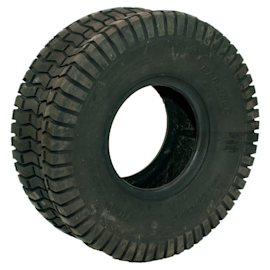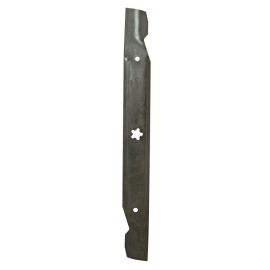- Kenmore refrigerator water filters
- Whirlpool refrigerator water filters
- Samsung refrigerator water filters
- GE refrigerator water filters
- LG refrigerator water filters
- Frigidaire refrigerator water filters
- KitchenAid refrigerator water filters
- Maytag refrigerator water filters
- Kenmore Elite refrigerator water filters
- Estate refrigerator water filters
- GE Profile refrigerator water filters
- Amana refrigerator water filters
- Bosch refrigerator water filters
- Dacor refrigerator water filters
- Electrolux refrigerator water filters
What's the difference between a lawn tractor and a garden tractor?


At first glance, lawn tractors and garden tractors look pretty similar. They both have wide tires, comfortable seats, and enough engine power to handle large areas of grass. But once you look a little closer, the differences become clear—especially in how they’re built and what tasks they’re designed to handle.
From mowing and light towing to heavy-duty yard work like tilling or hauling, each type of tractor has its own strengths. Understanding how they work can help you get the most out of the machine you have—or choose the right one for the jobs you need to tackle.
What is a lawn tractor?
A lawn tractor is a riding mower built for one main job: cutting grass. It’s designed to help homeowners maintain medium to large lawns more quickly and comfortably than a walk-behind mower. While some models can handle light towing or basic attachments, their real strength is in routine mowing for a healthier lawn.
Lawn tractors typically have mid-range engine power, a more compact frame, and simple controls—making them easy to operate even if you’re new to riding equipment. They're a popular choice for residential properties that need regular mowing but not a ton of heavy-duty yard work.
Common features of a lawn tractor
Most lawn tractors are built around the same core features, though size and specs can vary by brand and model. Here’s what you can usually expect:
Mid-range engine power (typically 15–22 HP)
Cutting decks usually between 42–54 inches
Designed for mowing and light towing
Compatible with limited attachments (like baggers, carts, and dethatchers)
Two-wheel drive with a smaller frame than garden tractors
The design prioritizes maneuverability and ease of use, making lawn tractors well-suited for lawns with trees, landscaping, or tight spaces.
What lawn tractors can—and can't—do
Lawn tractors are ideal for regular lawn care and basic yard tasks, especially if your property is mostly flat or gently sloped. They can tow small yard carts, spreaders, or aerators without much trouble.
However, they’re not built for heavy-duty work. They typically can’t support ground-engaging attachments like tillers or plows, and their lighter frame and transmission aren’t designed for rough or uneven terrain. If you need to break ground, grade a driveway, or manage large garden beds, you’ll want to look beyond what a lawn tractor can handle.
What is a garden tractor?
A garden tractor is a step up from a lawn tractor—both in size and capability. While it can handle mowing just fine, it’s really designed for more demanding yard work. With a stronger frame, more powerful engine, and support for heavy-duty attachments, a garden tractor is built to take on a wider range of property maintenance tasks.
Garden tractors are a good fit for homeowners who manage larger plots of land, work with uneven or soft terrain, or use attachments that require more power and traction than a lawn tractor can deliver.
Common features of a garden tractor
Garden tractors are noticeably more robust than lawn tractors. They're engineered for durability and performance, especially when paired with ground-engaging attachments or used on tougher terrain.
More powerful engines (usually 20–30+ HP)
Heavier-duty transmission and chassis
Larger rear tires for better traction
Support for ground-engaging attachments like tillers, plows, and aerators
Available with locking rear differentials and sometimes 4WD
That added strength comes with a larger frame and more weight, but it also means the tractor can handle serious jobs year-round—not just routine mowing.
What garden tractors are built for
If you do your own landscaping, manage large garden beds, or need to prep soil, a garden tractor is up to the task. These machines can pull a wide range of attachments, including:
Rear-mounted tillers
Disc harrows
Moldboard or box plows
Lawn rollers and core aerators
They’re also better equipped for snow removal in winter with snow blowers or blade attachments. Thanks to their rugged design and often enhanced traction systems, garden tractors can work across uneven ground, hills, and soft soil without slipping or bogging down.
That said, garden tractors are heavier and more expensive than lawn tractors—so they make the most sense for homeowners who plan to use them for more than just mowing.
Which one is right for your yard?
It really comes down to what you need your machine to do.
Go with a lawn tractor if:
You mostly need to mow a lawn up to a few acres
You have mostly flat or gently sloping terrain
You want a simpler, more budget-friendly machine
You don’t plan to use many attachments
Choose a garden tractor if:
You need to handle tough yard work like tilling or grading
You own several acres with mixed terrain
You want a long-term investment with more versatility
You’ll be using ground-engaging or heavy-duty attachments
What lawn and garden tractors have in common
While lawn and garden tractors differ in size, strength, and capabilities, they share many of the same basic maintenance needs. Whether you’re cutting grass with a mid-sized lawn tractor or hauling a tiller with a heavy-duty garden tractor, keeping up with repairs and seasonal maintenance will help extend the life of your machine.
Routine maintenance you can do yourself
Both types of tractors need the same basic upkeep:
Sharpening or replacing the mower blade
Changing the air filter and spark plug
Inspecting and replacing belts as needed
Cleaning the mower deck to prevent buildup
Checking tire pressure and battery condition
Most of these tasks are simple with the right parts and a bit of guidance. We can help you find the lawn tractor and garden tractor maintenance parts, belts, and blades you need to keep your equipment in top shape.
Common repairs
Many of the repair processes are the same regardless of whether you’re working on a lawn or garden tractor. For example:
Need to replace a blade? Follow our step-by-step guide on how to replace a riding mower blade.
Having issues with vibration or noise from the mower deck? You might need to swap out the mandrel assembly. Here’s how to replace a riding mower mandrel assembly.
The main difference in repair work typically comes down to accessibility. Garden tractors tend to have larger components and heavier-duty systems, which may take a little more time or effort to service—but the basic how-to remains the same.
Not sure which one you have?
If you already own a riding mower and aren’t sure whether it’s a lawn tractor or garden tractor, a few quick checks can help you figure it out.
Look for these clues:
Frame and weight – Garden tractors are typically heavier, with a more rugged build
Rear tires – Larger and more aggressive tires often point to a garden tractor
Attachments – If it supports ground-engaging tools like tillers or plows, it’s likely a garden tractor
Transmission – Features like ground speed control or locking differentials are usually found on garden tractors
Still not sure? Look up your model number on Sears PartsDirect to find a detailed parts list and manual for your exact machine—plus any available attachment info.
Lawn tractors and garden tractors serve different purposes, but they share plenty of common ground when it comes to maintenance and day-to-day operation. Whether you’re mowing a couple of acres or managing a mix of landscaping and garden work, knowing what your machine can do—and how to take care of it—makes every job easier.
From mower maintenance parts to DIY repair help, and blades to belts, Sears PartsDirect has what you need to keep your tractor running right—whatever kind it is.
Most common symptoms to help you fix your riding mowers & tractors
Choose a symptom to see related riding mower and lawn tractor repairs.
Main causes: punctured tire or inner tube, leaky valve stem, damaged wheel rim…
Main causes: clogged carburetor, damaged flywheel key, dirty spark plug, stale fuel, improper valve lash, engine needs a…
Main causes: worn or broken ground drive belt, bad seat switch, transaxle freewheel control engaged, transaxle failure, …
Main causes: damaged tie rods, bent or worn wheel spindle, worn front axle, damaged sector gear assembly…
Main causes: engine overfilled with oil, leaky head gasket or sump gasket, damaged carburetor seals, cracked fuel pump, …
Main causes: shift lever needs adjustment, neutral control needs adjustment…
Main causes: worn or broken blade belt, broken belt idler pulley, blade clutch cable failure, bad PTO switch, damaged ma…
Main causes: damaged cutting blade, worn deck pulley, damaged mandrel pulley, loose fasteners on mower deck components…
Main causes: faulty battery, bad alternator…
Most common repair guides to help fix your riding mowers & tractors
These step-by-step repair guides will help you safely fix what’s broken on your riding mower or lawn tractor.

How to replace the starter motor on a riding lawn mower
If you hear the solenoid click but don’t hear the starter motor spin when you turn the key, follow these steps to replac…
Repair difficulty
Time required
30 minutes or less

How to replace a riding lawn mower rear tire
Your mower can’t run on a damaged rear tire. Here’s how to install a new one.…
Repair difficulty
Time required
60 minutes or less

How to replace a riding lawn mower blade
If a blade on your mower is dull or bent, replace it following the steps in this repair guide.…
Repair difficulty
Time required
30 minutes or less
Effective articles & videos to help repair your riding mowers & tractors
Use the advice and tips in these articles and videos to get the most out of your riding mower or lawn tractor.

Do you know a lawn tractor from a garden tractor? Take a look at the key differences and discover how each handles your …

Wondering when to mow your lawn for the best results? Timing matters more than you might think. Discover the best time o…

Learn about all the convenient features on our Sears PartsDirect website that make your parts purchases easier.…